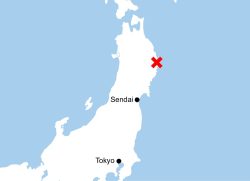17:16 JST, August 3, 2024
The Kagoshima prefectural police chief — who holds the highest position in the organization — has been accused of covering up internal misconduct, but the prefectural police cannot be considered to have answered such allegations head-on. It is difficult to imagine the police being able to restore the trust of people in the prefecture with the announcement of their investigation report.
The Kagoshima prefectural police, embroiled in a spate of scandals, have released a report summarizing the results of their investigations to date.
At the prefectural police, there have been a spate of incidents, such as stalking and voyeuristic photography in a women’s restroom, both of which were committed by police officers. The former head of the community safety department, one of the highest posts for noncareer-track officers at the prefectural police headquarters, was arrested and indicted for allegedly leaking investigative information related to the incidents to outside parties.
In particular, the former department head has caused deep shock by claiming in court that Akiteru Nogawa, who holds the highest position in the organization, “tried to cover up the scandals by police officers.”
If it is true, this is a situation that cannot be overlooked. It is no wonder that this has become a major issue at the prefectural assembly. The prefectural police and the National Police Agency should be responsible for investigating the facts in detail and making them public.
Despite this, the report brushed aside the allegations of the cover-ups by Nogawa on the grounds that the former department head did not report the incidents directly to Nogawa, among other reasons. The report contained only a summary of the individual scandals, their causes and measures to prevent their recurrence.
There are many differences between the statements made by Nogawa and the former department head. There is no indication in the report that these discrepancies have been carefully examined.
In June, Nogawa said at a press conference, “It is not true that I ordered cover-ups.” The prefectural police and the NPA have said that the matter has been settled with the release of the investigation report. However, it would be a big mistake if they think that this has cleared up the allegations.
The investigation by a police station into the voyeuristic photography incident, which the former department head claims was covered up, was in fact suspended temporarily. The report stated that it was due to the fact that Nogawa’s instructions were not properly conveyed to the senior officers at the police station in charge of the investigation.
Based on the reason, the report may have concluded that there were no cover-ups. But if the instructions of the prefectural police chief were improperly conveyed to the officers in charge of the investigation, that in itself is something that should not have happened. Nogawa bears an extremely heavy responsibility.
The NPA dispatched officials to the prefectural police to conduct a special investigation into the scandals. If that is the case, then shouldn’t the agency have stepped in and also investigated the cover-up allegations?
Given its content, the report cannot escape criticism that it reflects the limitations of the internal investigation. A reinvestigation by a third party should be considered.
Japan is a safe country, and trust in the police is strong. In recent years, however, as there have been a number of scandals involving police officers in various parts of the country, this trust has been shaken.
Isn’t organizational discipline within the police lax nationwide? It is imperative for the NPA to make efforts to rebuild the organizations it is responsible for and work to restore public trust.
(From The Yomiuri Shimbun, Aug. 3, 2024)
"Editorial & Columns" POPULAR ARTICLE
-

Artificial Intelligence Expands Possibilities for Foreign Language Learners
-

Build Intellectual, Physical Strength, As Well As Communicative Power / Japan Should Move from Beneficiary to Shaper of World Order
-

Global Economy in Turmoil: Prevent Free Trade System from Going Adrift / Risks to Financial Markets Must Be Heeded
-

Japan-China Strain Set to Persist as Beijing Officials Self-Interestedly Bash Tokyo; Takaichi Unlikely to Back Down
-

French and German Ambassadors to Japan Call for Democracies to Unite in Defense against Russian Disinformation
JN ACCESS RANKING
-

As Chinese Tourists Shun Japan, Hotels and Stores Suffer
-

Osaka-Kansai Expo’s Economic Impact Estimated at ¥3.6 Trillion, Takes Actual Visitor Numbers into Account
-

Japan Govt Adopts Measures to Curb Mega Solar Power Plant Projects Amid Environmental Concerns
-

BOJ Gov. Ueda: Highly Likely Mechanism for Rising Wages, Prices Will Be Maintained
-

Economic Security Panels Debate Supply Chains, Rare Earths; Participants Emphasize Importance of Cooperation Among Allies






















